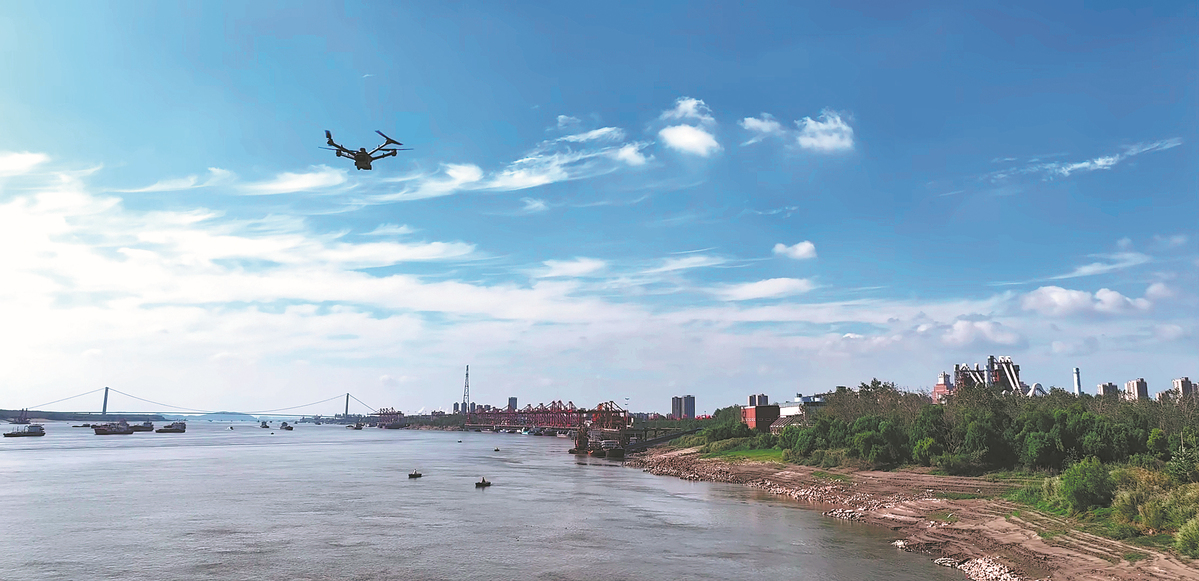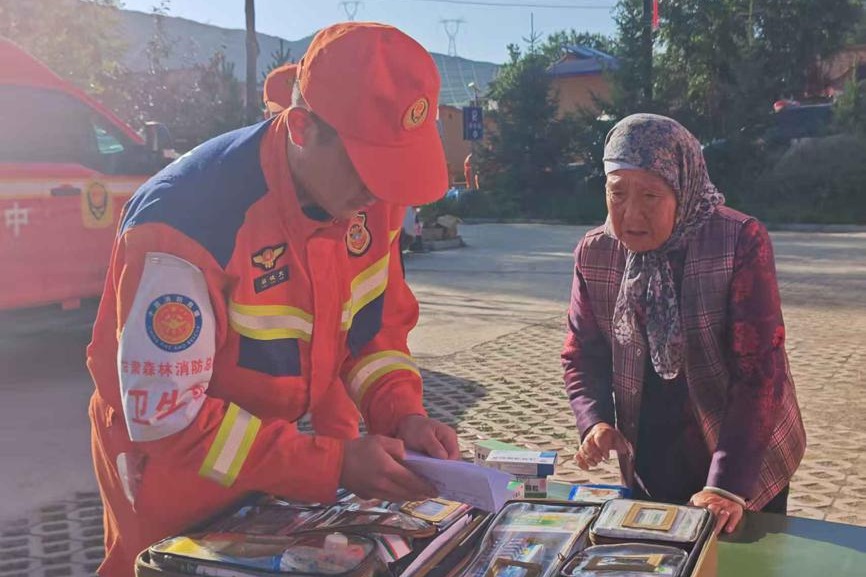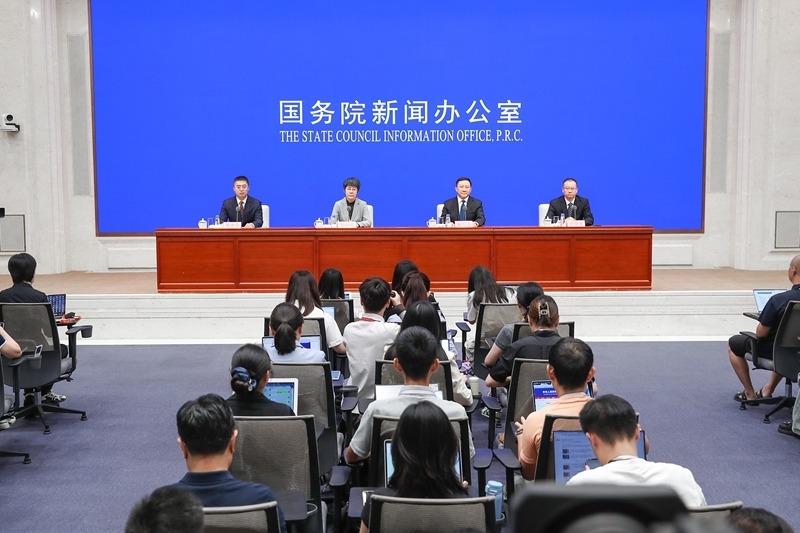Drone patrols improve safety and monitoring of Wuhan waterways


Three drones took off simultaneously at night from three locations in Wuhan, Hubei province, to fly above the Yangtze River and patrol the shipping lanes. On the ground, the high-definition pictures taken by the drones were transmitted to a computer and analyzed by artificial intelligence so technicians could know the real time condition.
About 20 minutes later, the drones came back. Previously, it took three hours for traditional ships to do a similar patrol.
Since late June, the 43.3-kilometer-long main waterway of the Wuhan section on the Yangtze has been brought under unmanned inspection, a breakthrough in the intelligent and modern inland navigation management model.
Four cross-river bridges, 63 navigation marks and the surrounding environment on the waterway will be patrolled and inspected by drones regularly.
"The drones feature 4K ultra high-definition capability and fly at a speed of 54 km per hour, which significantly improve the patrol's efficiency and effectiveness, sparing workers from extensive labor," said Guo Yao, deputy director of the navigation aids office of the Changjiang Wuhan Waterway Bureau.
Each photo taken by the drones is capable of capturing every detail of bridge opening marks, bridge pillar lights, as well as boats and navigational aids simultaneously against complex lighting backgrounds, according to Guo.
This resolves the issues encountered during human boat patrols, such as low shooting angles requiring multiple shots from various perspectives and the inconsistent imaging quality caused by using diverse photography equipment.
Previously, the patrol drones have discovered several instances of vessels anchoring outside designated zones and exposed shoals outside the waterway to maritime authorities. This has effectively ensured unimpeded waterway navigation and maintained orderly anchorage operations, Guo said.
However, they faced multiple challenges concerning regulation, flight safety, and data security in developing unmanned patrol.
The bureau first applied for a certificate from the air traffic management authorities. To ensure safe bridge passage, they designated the lowest points of bridge cables and the areas along both river banks as the operational flight zone. Before crossing a bridge, the drone will be guided using pre-set waypoints to fly over the structure, avoiding collisions with bridges and high-rise buildings, according to Guo.
Besides, they ensure all data remains within an internal network to maintain data security.
"Unmanned patrol inspection is the future trend. The ultimate goal should always be to enhance the quality of management and public services," said Guo.
The drones are part of the whole smart waterway system of the Wuhan section that also includes AI video polling and unmanned ship measurement. The unmanned ship, for example, has been used in a nearshore survey of Hanyang district. It provided critical data for analyzing bed changes in the Wuqiao waterway, supporting three navigational span adjustments at Wuhan Yangtze River Bridge.
In November 2023, the Ministry of Transport issued guidelines on accelerating the development of smart ports and smart waterways, setting the goal of "achieving comprehensive digitalization of port and waterway infrastructure, intelligent production and operation management, and smart public services by 2027".
Yang Che contributed to this story.
- Drone patrols improve safety and monitoring of Wuhan waterways
- Workshop acts as an active matchmaker
- Mutual certificate recognition opens up global opportunities for seafarers
- Creative university acceptance letters spur social media frenzy
- Love of konghou leads to conservatory enrollment
- Unwed mom's rejection sparks subsidy debate



































